Good News From the June CPI Report: Inflation Is Truly Declining
The market-friendly number is still above the Fed’s target, and a July interest-rate hike looks likely.

The June Consumer Price Index report brought good news for investors and consumers alike, but that may not deter the Federal Reserve from hiking interest rates later this month.
“Inflation is now showing broad-based signs of deceleration,” says Morningstar chief economist Preston Caldwell. “The Fed is still likely to hike in its July meeting, but today’s report supports our view that the Fed will pivot to aggressive cutting in 2024 after inflation falls.”
The annual rate of inflation is now at the slowest it has been in just over two years. Inflation is up 3.0% in June from its year-ago levels—the smallest increase since March 2021. While the rate of inflation in the June CPI report remains above where the Fed wants it to be, the data suggests clear progress in getting price pressures down toward more acceptable levels.
“Today’s report bolsters our view that inflation is headed down, eventually clearing the way for large interest-rate cuts,” Caldwell says.
CPI Report Reveals Slowing Inflation
“Overall, CPI inflation is homing in on the Fed’s 2% target,” Caldwell says, noting that the latest reading is well below its peak of 8.9% in June 2022. By his measure, on an annualized basis, overall inflation has averaged 2.7% in the last three months.
“Heretofore, progress on inflation was mainly attributable to lower food and energy inflation. But now, crucially, we’re also seeing improvement in terms of core inflation,” he explains.
The Bureau of Labor Statistics reported that the CPI rose 3.0% in June from year-ago levels—the slowest increase since March 2021 and smaller than economists’ forecasts of 3.1%. The core CPI, which excludes volatile food and energy costs, rose 4.8% in June from year-ago levels after rising 5.3% in May.
The CPI rose 0.2% in June from the previous month—slower than economists’ expectations, but a slight increase from the 0.1% rise in May. Core CPI rose 0.2% in June—slower than economists’ forecasts for the month and slower than the 0.4% rise in May.
The Fed is meeting on July 25 and 26 to determine its next steps against this backdrop of slowing but still-elevated inflation. In the bond market, most investors expect the regulator to raise the federal-funds rate by 0.25 percentage points and then keep it there for the rest of the year.
CPI vs. Core CPI

June CPI Report Key Stats
- CPI rose 0.2% for the month versus 0.1% in May.
- Core CPI rose 0.2% after rising 0.4% in May.
- CPI rose 3.0% year over year after rising 4.0% in May.
- Core CPI rose 4.8% year over year after rising 5.3% in May.
Under the hood, shelter was again the largest contributor to rising prices, accounting for over 70% of the total increase. Motor vehicle prices also made a significant contribution. Food prices ticked upward in June, rising 0.1% after rising 0.2% in May. Food-at-home prices held steady, while food-away-from-home prices rose 0.4%. Energy prices rose over the month.
Consumer Price Index
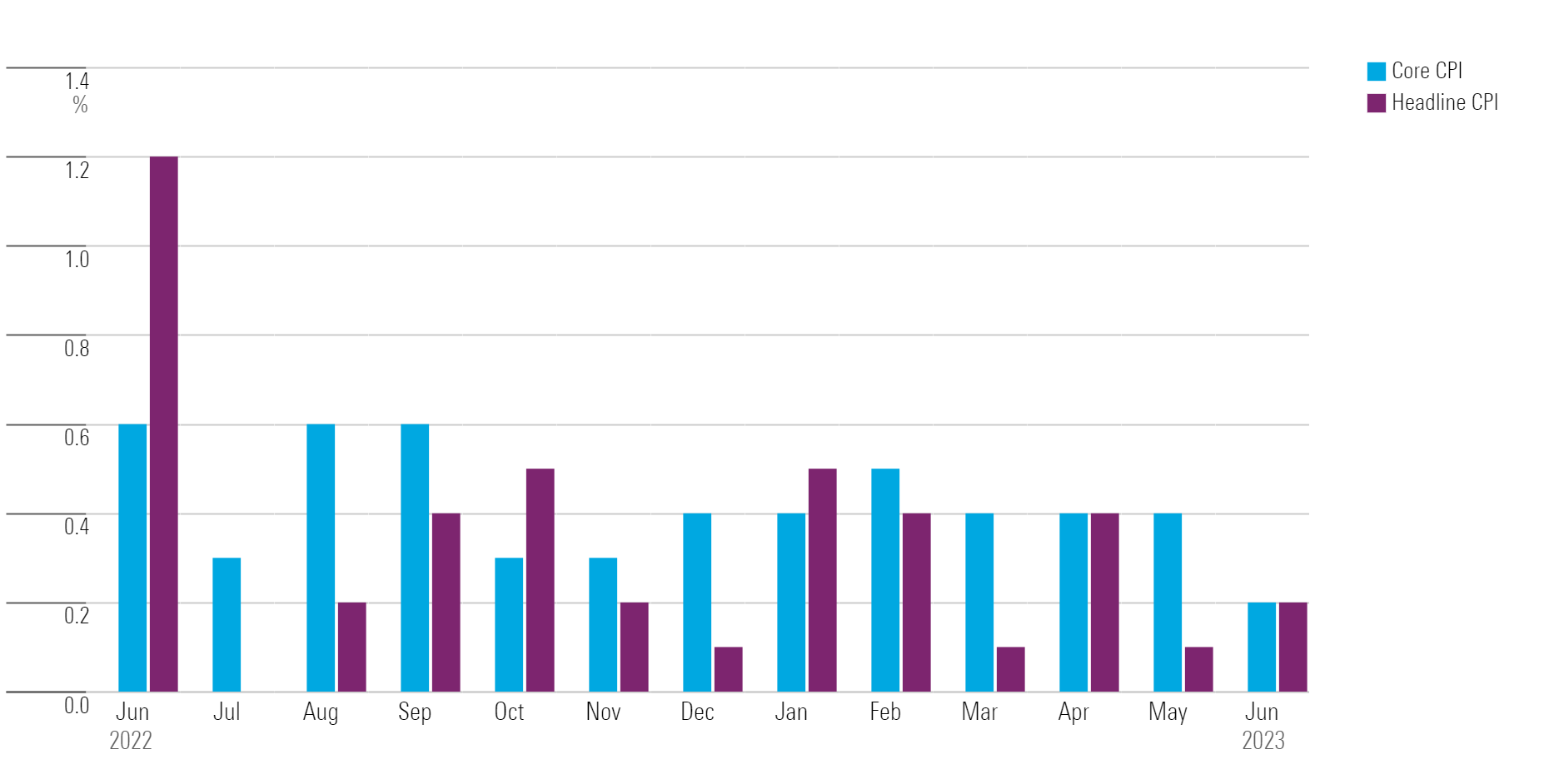
‘Supercore’ Inflation Slows
“One crucial indicator for inflationary momentum is core services excluding shelter and healthcare, often dubbed ‘supercore’ inflation,” Caldwell says. “It is held by the Fed to be a good gauge of inflation’s underlying trend.”
Supercore inflation was just 2.7% in the past three months, by Caldwell’s measure. “Admittedly, this inflation measure is very volatile, and plunging airline fares contributed a 1.5% negative impact,” he says. “Yet we still see signs of broad-based deceleration in inflation in the consumer services sector. This is likely in part a response to moderating wage inflation.”
'Supercore' Inflation
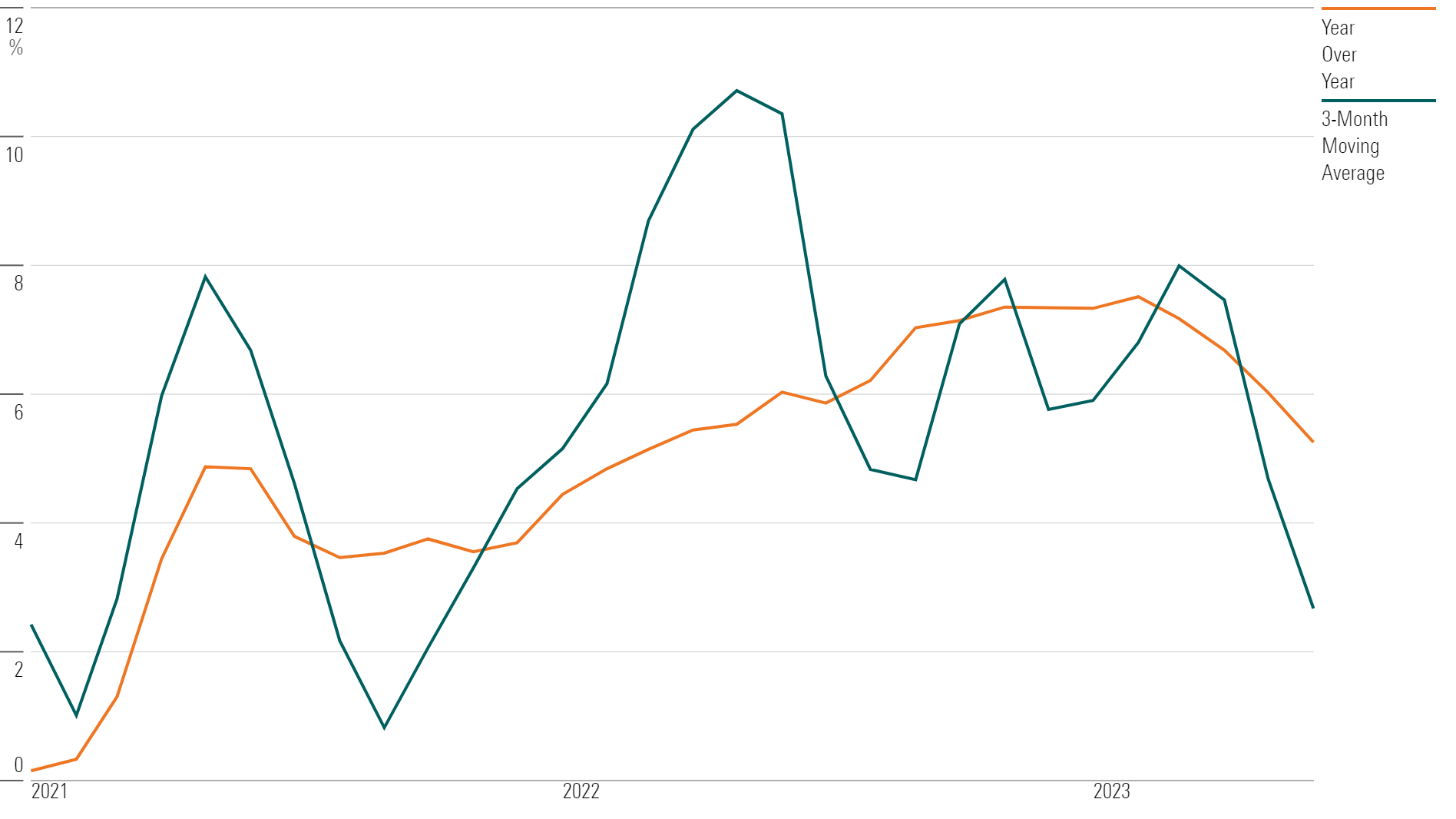
Core Goods and Services Inflation
Overall, core inflation has posted a 4.1% annualized increase over the past three months, according to Caldwell, down from 5.1% in the three months ending in March.
“The story on core inflation has shifted abruptly at several junctures in the past year. First, in late 2022 we saw core inflation excluding shelter (housing) prices fall sharply, while shelter inflation soared,” Caldwell says. “Then, in early 2023, shelter inflation fell, but this was offset by renewed high inflation in other parts of the index (especially used vehicles).” Now, he says, it looks like most components of core inflation are finally falling in concert.
Impact of Shelter on Core CPI
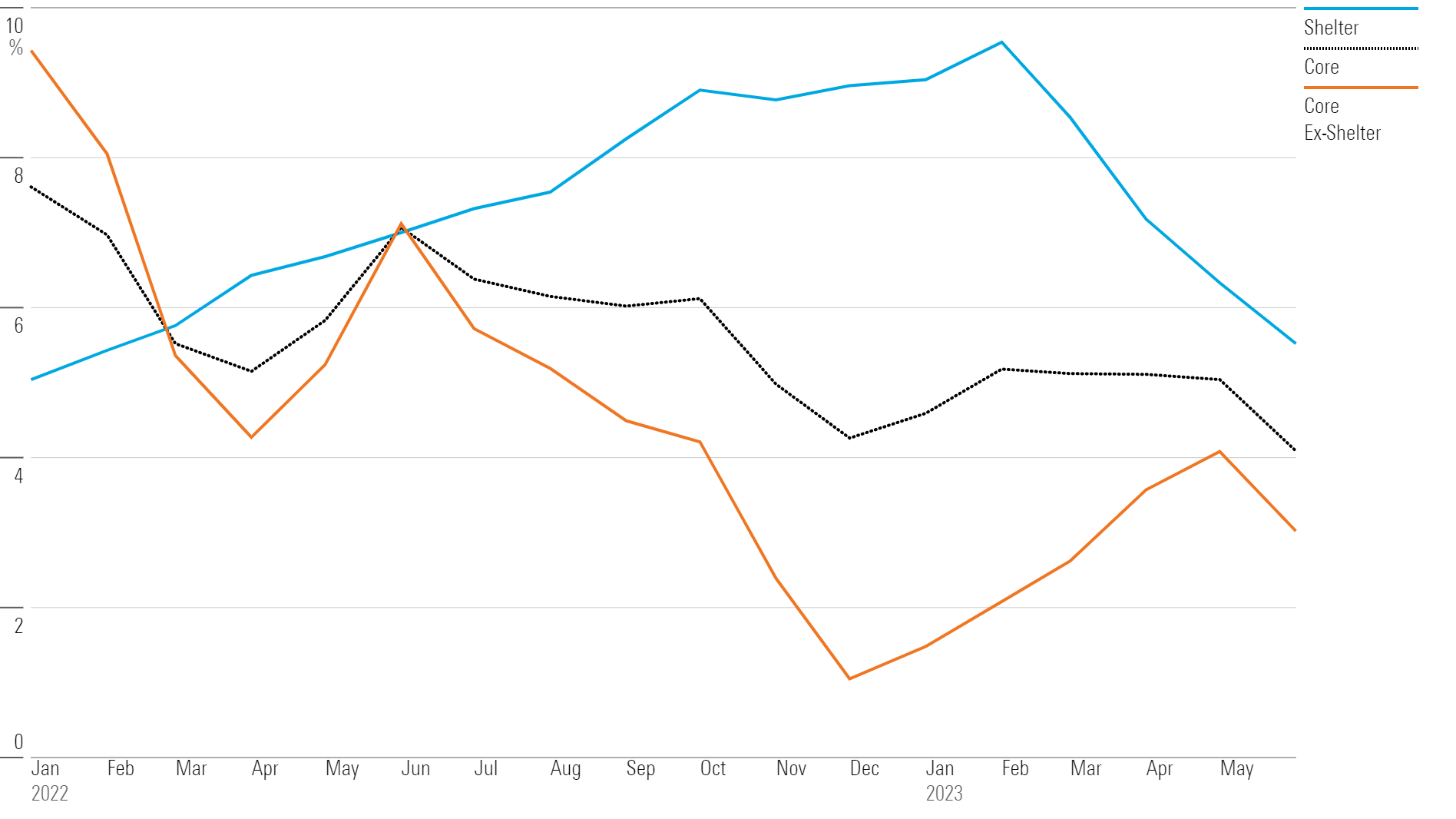
“Durable goods inflation was 3% annualized in the last three months and is heading back down again,” Caldwell says. Durables inflation excluding vehicles was actually negative 6.4% in the past three months, by his measure—and that included price drops in appliances, TVs, and furniture. Used car prices are now heading back down again, he says, “which will likely push overall durables inflation into negative territory over the next several months.”
“Nondurable goods inflation is still running a bit hot (6.4% annualized last three months), owing to apparel, drugs, and personal care products, among other contributors. But supply chain improvement, including lower fuel prices, should also help ease inflation in nondurables eventually,” Caldwell explains. Supply chains have healed by many measures, he says, “and that will exert sustained downward pressure on durables inflation until durables prices converge much closer to the pre-COVID-19 trend.”
Core Goods and Services Inflation
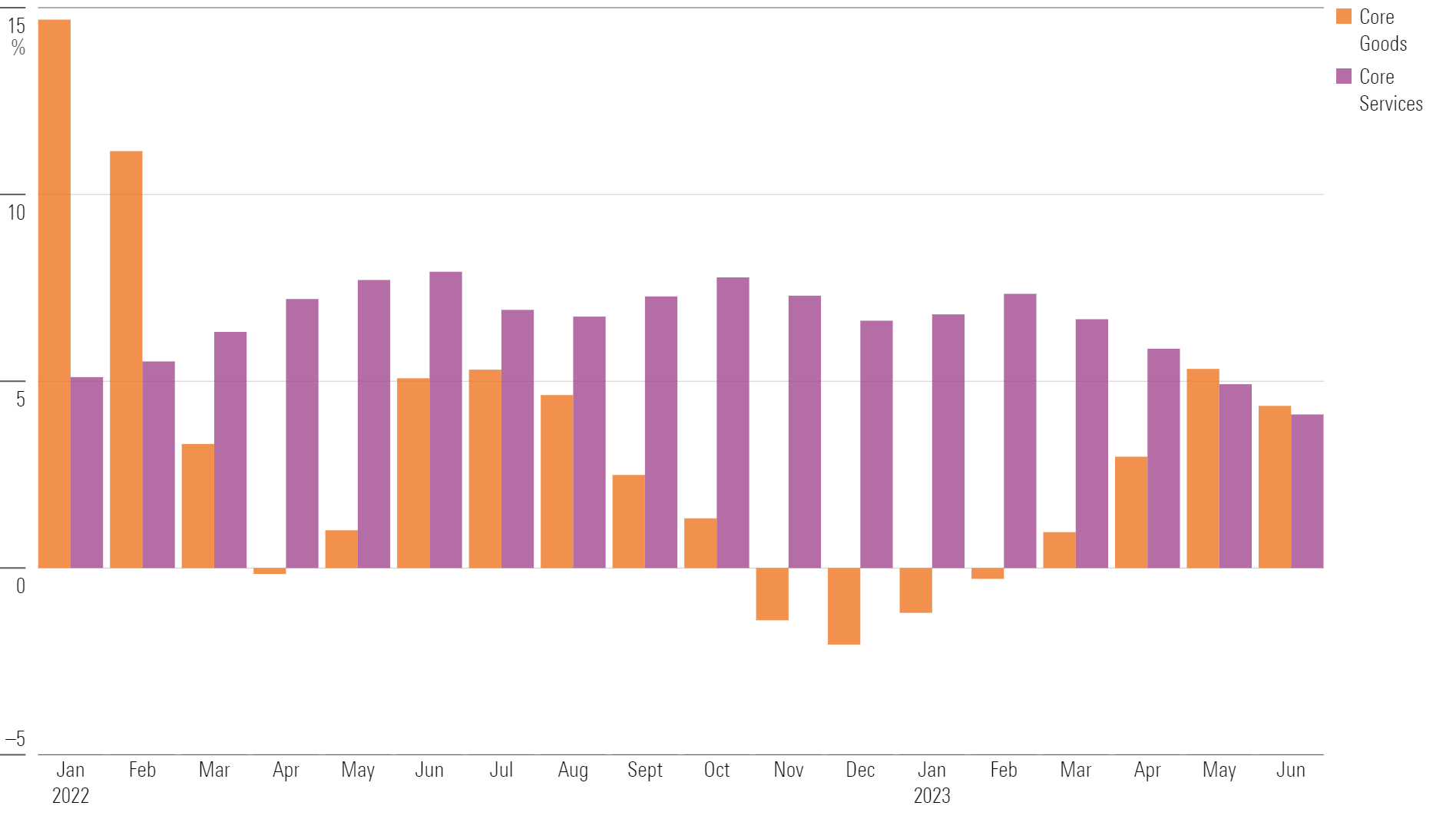
In June, shelter prices rose 0.4% after rising 0.6% in May. Prices for new vehicles held steady over the month, while used car and truck prices fell 0.5%.
Energy prices rose 0.8% for the month after falling 3.6% in May. Within the energy component for June, gasoline prices rose 1.0%, electricity prices rose 0.9%, and utility (piped) gas services prices fell 1.7%.
Change in Selected CPI Components
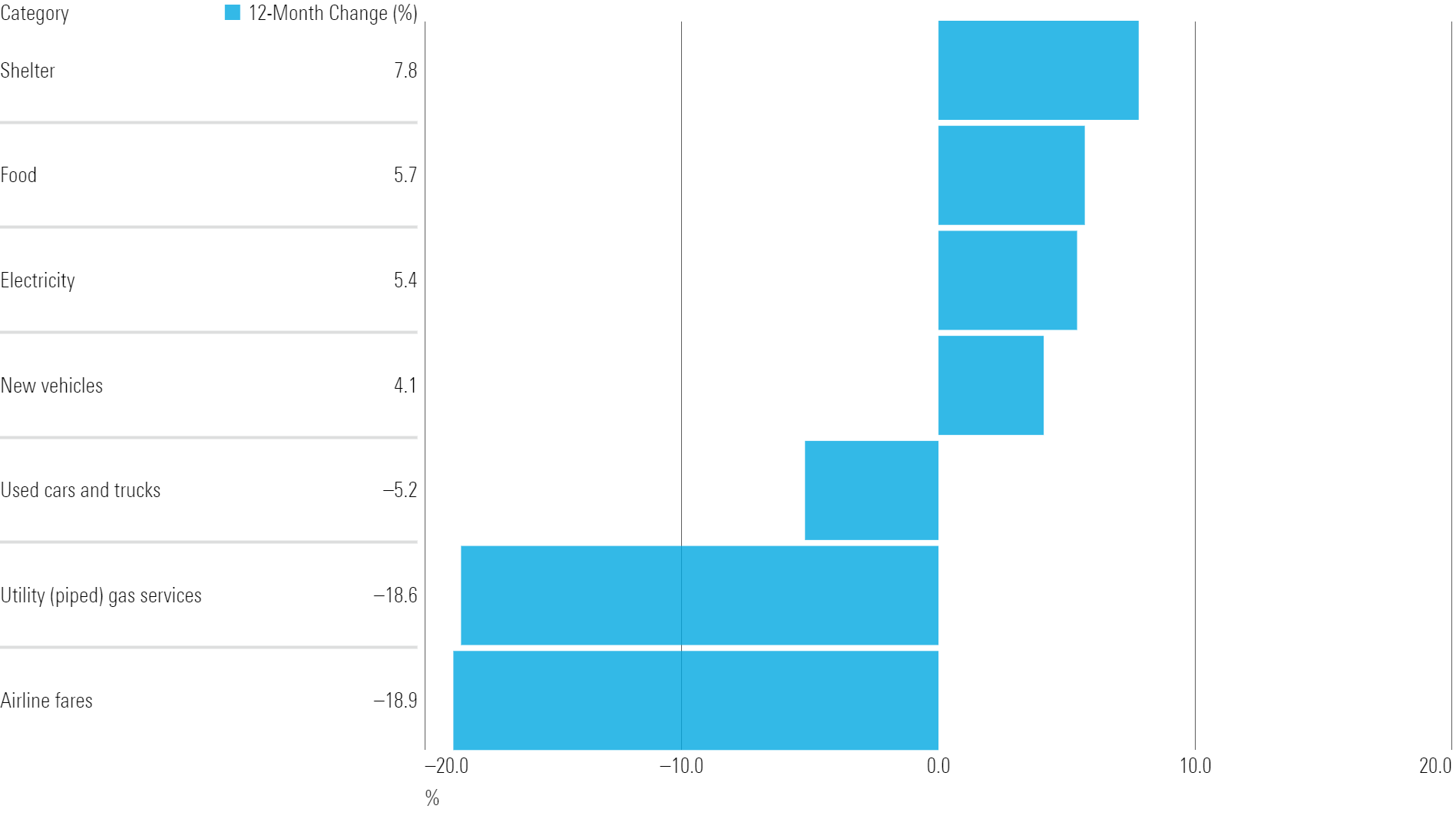
Fed Is Expected to Raise Rates in July, Then Hold Them
It will take more good news on inflation to convince the Fed to hold rates steady at its upcoming meeting. “One month’s worth of data won’t be enough to dissuade the Fed from hiking in its July meeting,” Caldwell says. “This is especially the case given that many committee members already had wished to hike in June.” Additionally, Caldwell thinks that labor market data is still running hot and that other measures of economic activity still look robust.
“Regardless, today’s news will eventually lead to looser monetary policy. Accordingly, the two-year Treasury yield has fallen around 17 basis points on today’s news, implying a lower path for the federal-funds rate over the next two years,” he says.
Market participants expect the Fed to hike rates by another quarter-point at its July meeting. Currently, 91% of market participants expect the regulator to raise its target for the federal-funds effective rate to a range of 5.25%-5.50% at the meeting, according to the CME FedWatch Tool as of 9 a.m. Eastern time. A month ago, expectations were split, with 60% of market participants expecting a quarter-point rise for July and 26% expecting the Fed to hold rates steady. The remaining 14% thought the target rate would rise to a range of 5.50%-5.75% by the July meeting.
After July, the majority of participants (55%) predict the Fed will hold interest rates steady at 5.25%-5.50% for the rest of the year. Meanwhile, 23% see the Fed raising rates by an additional quarter-point over the rest of the year to a target of 5.50%-5.75%, and 18% expect rates to remain at their current levels (5.00%-5.25%) through December.
Expectations for July 2023 Federal Reserve Meeting
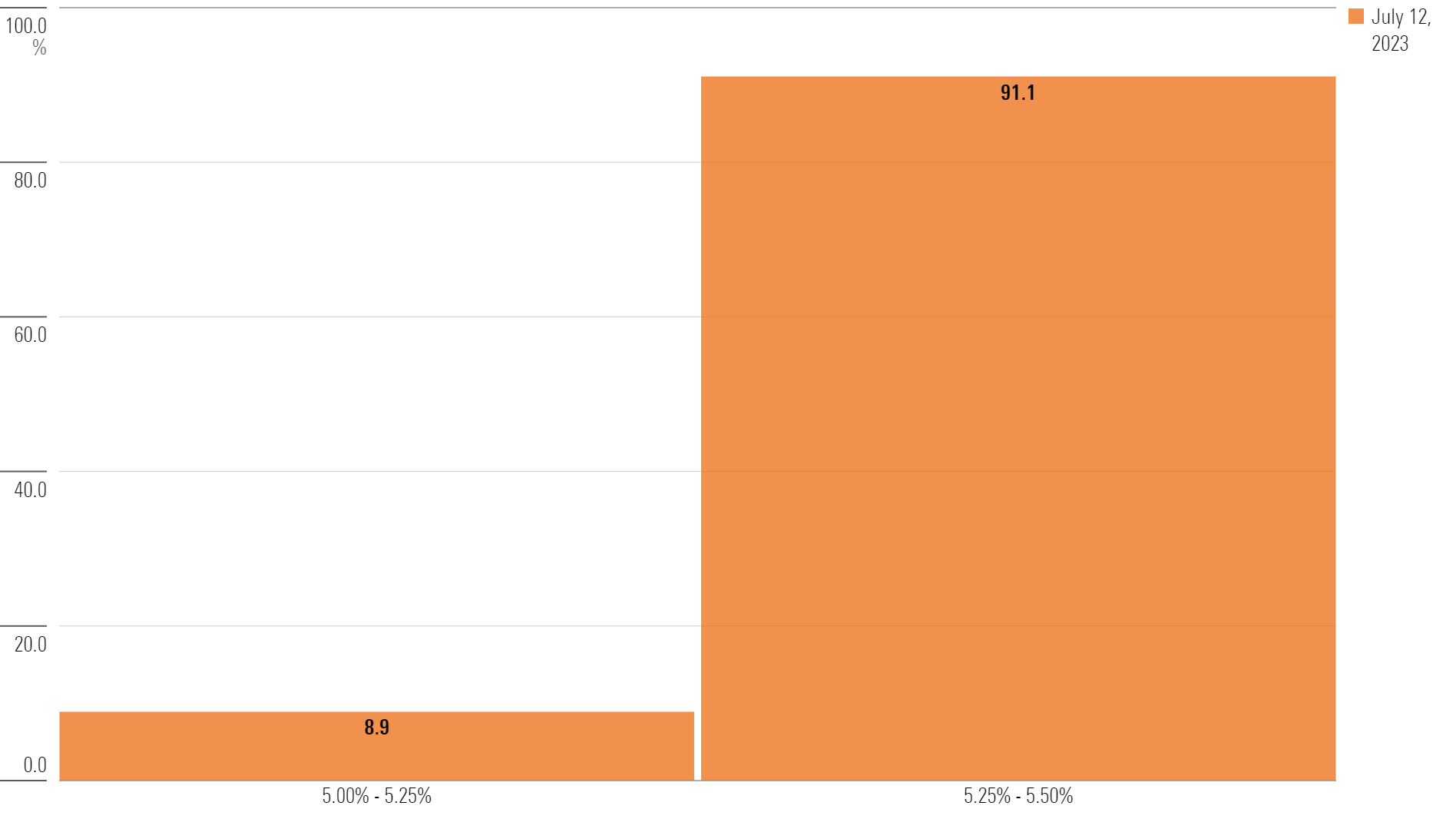
The author or authors do not own shares in any securities mentioned in this article. Find out about Morningstar’s editorial policies.

/s3.amazonaws.com/arc-authors/morningstar/ba63f047-a5cf-49a2-aa38-61ba5ba0cc9e.jpg)
/cloudfront-us-east-1.images.arcpublishing.com/morningstar/LDGHWJAL2NFZJBVDHSFFNEULHE.jpg)
/cloudfront-us-east-1.images.arcpublishing.com/morningstar/MCOHMFJ2MVEVPAJNB73ASRA4EA.jpg)
/cloudfront-us-east-1.images.arcpublishing.com/morningstar/VUWQI723Q5E43P5QRTRHGLJ7TI.png)
:quality(80)/s3.amazonaws.com/arc-authors/morningstar/ba63f047-a5cf-49a2-aa38-61ba5ba0cc9e.jpg)